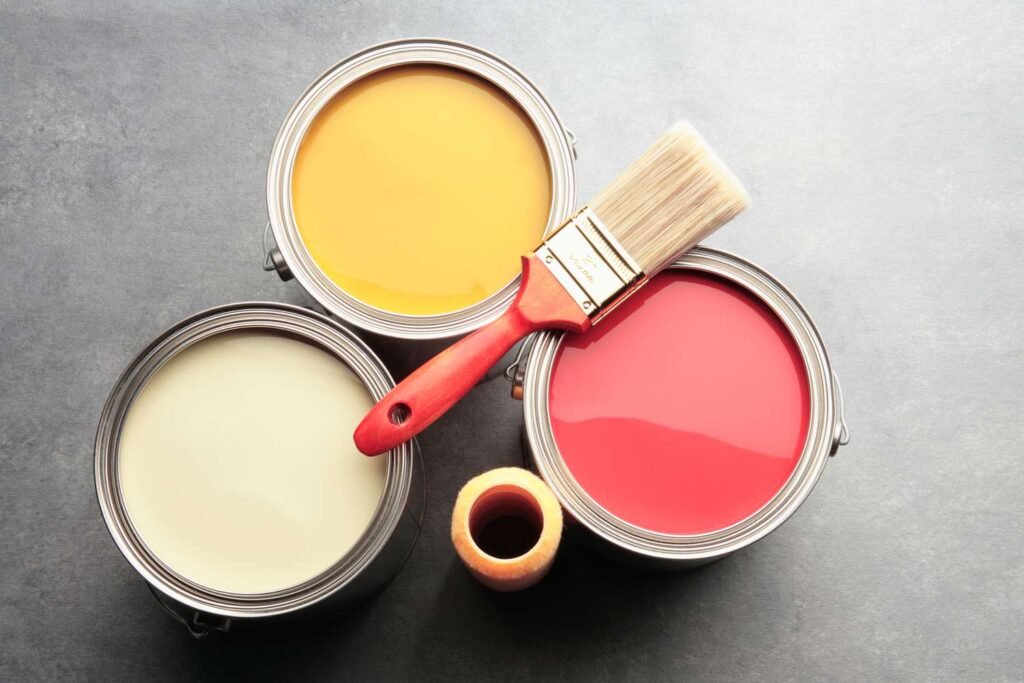When it comes to painting a room or an entire house, accuracy is key. Paint calculators have become invaluable tools for DIY enthusiasts and professional painters alike, helping to estimate the amount of paint needed for a project. However, using a paint calculator incorrectly can lead to significant overspending, wasted time, and unsatisfactory results. Here are some common mistakes to avoid when using a paint calculator to ensure a successful painting project.
Neglecting to Measure Accurately
One of the most crucial steps in using a paint calculator is taking accurate measurements of the surfaces you plan to paint. Failing to do so can lead to incorrect estimates. Here are a few tips for measuring accurately:
Use a Tape Measure: Always use a tape measure to get precise measurements of the height and width of each wall. Avoid estimating or using the same measurement for multiple walls without checking.
Consider Windows and Doors: When measuring, subtract the area of windows and doors from the total wall area. A paint calculator typically assumes you’re painting the entire wall, so these areas need to be deducted for a more accurate estimate.
Measure Irregular Spaces: For walls with unusual shapes or angles, consider dividing the area into smaller, manageable sections. Measure each section separately and add the areas together.
Ignoring Paint Coverage Information
Different paints have varying coverage rates, usually expressed in square feet per gallon. This information is often available on the paint can or the manufacturer’s website. Ignoring this detail can lead to significant errors in your calculations. Here’s what to keep in mind:
Read the Label: Always check the paint label for coverage information. A high-quality paint might cover more area than a less expensive option.
Account for Texture: If the surface you’re painting has a textured finish (like stucco or brick), it may require more paint than a smooth surface. Be sure to adjust your estimates accordingly.
Consider Multiple Coats: If you plan to apply more than one coat of paint, remember to multiply your total coverage by the number of coats you intend to use. Many calculators do not automatically account for this, so double-check your results.
Failing to Account for Sheen and Type of Paint
The type and sheen of paint can significantly affect how much you’ll need. For example, matte paints typically cover better than glossy paints, which may require more product to achieve the same finish. Here’s how to consider these factors:
Choose the Right Finish: If you’re using different sheens for different areas (such as eggshell for walls and satin for trim), make sure to calculate each area separately based on the coverage of the chosen finish.
Mix and Match Carefully: If you’re mixing paints or using different types (like primer and finish), account for each type’s coverage and properties. Primers often cover better, so you might need less when you switch to your final coat.
Not Including All Surfaces
When using a paint calculator, it’s essential to include all surfaces that require painting. Many users forget about ceilings, moldings, and trim, leading to a lack of adequate paint. Here’s how to ensure you account for all areas:
List All Areas: Make a list of every surface you plan to paint. Include walls, ceilings, doors, and any trim or molding. This comprehensive approach ensures you don’t miss any critical areas.
Separate Sections: For better accuracy, consider using separate calculations for different types of surfaces. For example, you might want to calculate wall paint and ceiling paint separately since they may require different products.
Rounding Measurements Up or Down
While it might seem like a good idea to round your measurements to simplify calculations, this practice can lead to significant inaccuracies. Here’s how to avoid this mistake:
Use Exact Figures: Always use the precise measurements you’ve taken without rounding them up or down. This accuracy will help ensure you order the correct amount of paint.
Trust the Calculator: Many paint calculators are designed to handle decimals and provide a precise estimate. Avoid manual rounding that could distort the final results.
Underestimating Waste and Spills
Regardless of how carefully you paint, some amount of paint will always be wasted due to spills, splatters, or tools needing cleaning. Here’s how to account for waste:
Add a Waste Factor: It’s a good idea to add an extra 10-15% to your total paint estimate to cover any unexpected waste. This ensures you have enough paint to complete your project without running out.
Consider Application Methods: Different application methods may yield varying amounts of waste. For instance, using a roller may produce more splatter than a brush, requiring a higher estimate.
Failing to Research the Calculator
Not all paint calculators are created equal. Some might have features that cater to specific projects, while others might offer generic calculations. Here’s how to choose wisely:
Read Reviews and Features: Before using a paint calculator, take the time to read reviews or check the features. Some calculators allow you to input the type of paint, surface type, and even room dimensions to provide a tailored estimate.
Compare Options: If you’re unsure, try using multiple calculators to see if they provide similar estimates. This can help confirm your measurements and calculations.
Overlooking the Time Factor
While paint calculators focus primarily on the quantity of paint, they often neglect the time needed for preparation, painting, and drying. To avoid frustration:
Plan Your Time: Factor in the time required for surface preparation, drying time between coats, and any necessary clean-up. These elements can impact your overall project timeline.
Schedule Breaks: Remember that painting can be labor-intensive. Scheduling breaks will help maintain energy levels and ensure you do a thorough job.
Disregarding Seasonal Factors
Seasonal factors can also affect your paint choice and project timeline. For example, humidity and temperature can impact how paint adheres and dries. Here’s what to consider:
Check Weather Conditions: If you’re painting outdoors, be mindful of the weather. Extreme temperatures or humidity can affect paint application and drying time.
Choose the Right Time: Plan your project during a time when conditions are favorable to ensure the best results. For example, spring or fall often provides more moderate temperatures for outdoor painting.
Not Seeking Professional Advice
If you’re unsure about your calculations or the best paint for your project, don’t hesitate to seek advice from professionals. They can provide insights that calculators might not cover. Here’s how to get the help you need:
Consult with Paint Store Experts: Staff at paint or hardware stores often have extensive knowledge about different types of paints, coverage, and techniques.
Consider Hiring a Professional: If your project is particularly complex or extensive, hiring a professional painter might save you time and ensure high-quality results.
Conclusion
Using a paint calculator can significantly streamline your painting project, but it’s essential to use it correctly to avoid common pitfalls. By measuring accurately, considering paint coverage, accounting for all surfaces, and allowing for waste, you can ensure a successful outcome. Remember, when in doubt, consult with professionals or refer to detailed guides. With these tips, you’ll be well-equipped to tackle your next painting project confidently.

Paint Calculator
Posted inBusiness

